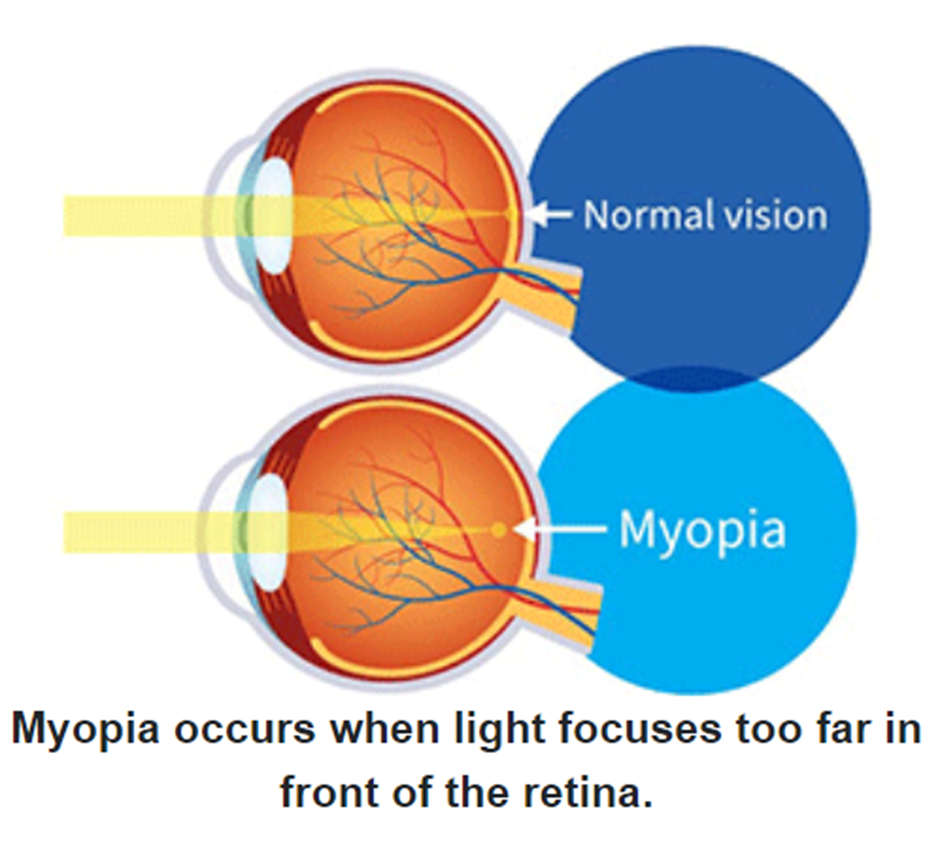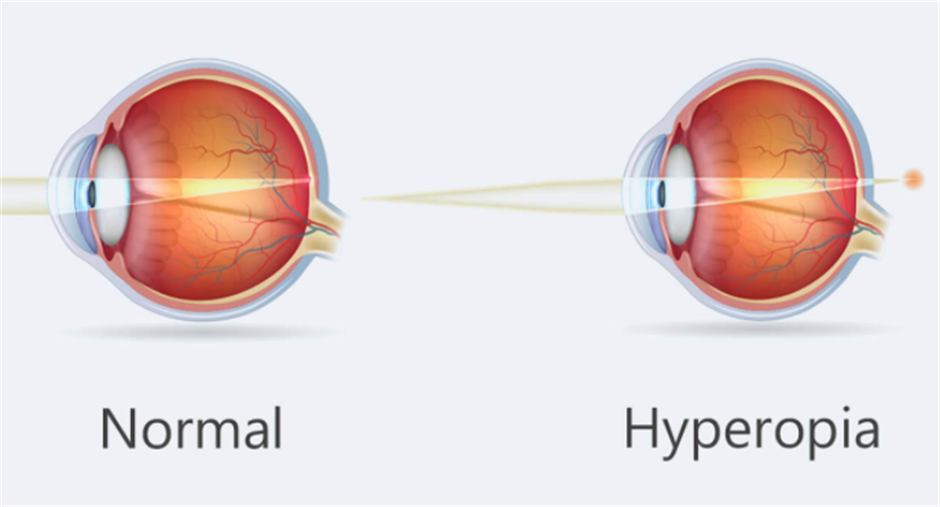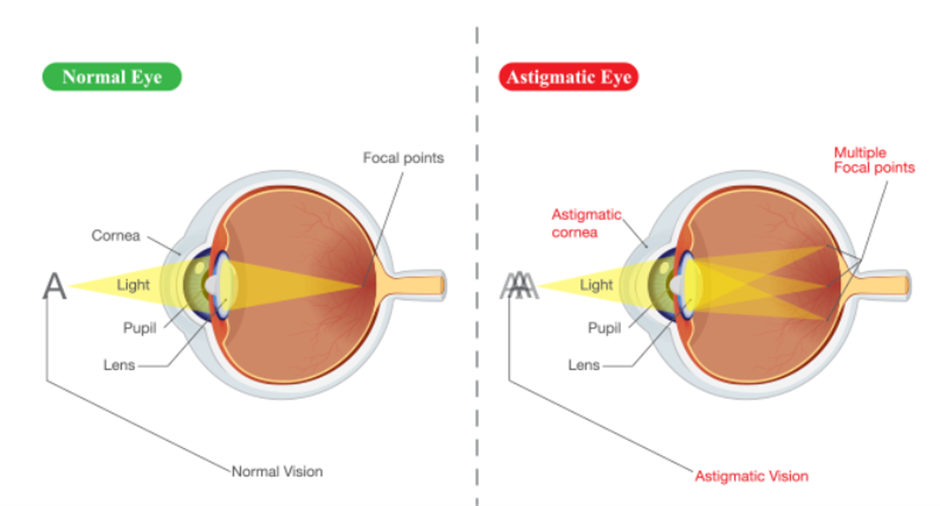There are 4 main categories of vision correction—emmetropia, myopia, hyperopia, and astigmatism.
Emmetropia is perfect vision. The eye is already perfectly refracting light onto the retina and does not require glasses correction.
Myopia is more commonly known as near-sightedness. It occurs when the eye is a little too long, resulting in light focusing in front of the retina.

In order to correct for myopia, your eye doctor will prescribed minus lenses (-X.XX). These minus lens push the point of focus backwards so that it aligns correctly on the retina.
Myopia is the most common form of refraction error in today’s society. In fact, it is actually thought to be a global epidemic, as more and more of the population is being diagnosed with this problem yearly.
These individuals can see great up close, but things far away seem blurry.
In children, you may notice the child having a hard time reading the board at school, holding reading material (cell phones, books, iPads, etc.) abnormally close to their faces, sitting extra close to the TV because they “can’t see”, or even squinting or rubbing their eyes a lot.
Hyperopia, on the other hand, occurs when a person can see well far away, but may have a hard time with seeing things up close.
Some of the most common complaints with hyperopes is actually not that they cannot see, but instead that they get headaches after reading or doing computer work, or that their eyes frequently feel tired or fatigued.
Hyperopia occurs when the eye is a little too short. Therefore, light focused slightly behind the retina.

With normal vision, an image is sharply focused onto the surface of the retina. In farsightedness (hyperopia), your cornea doesn't refract light properly, so the point of focus falls behind the retina. This makes close-up objects appear blurry.
To correct hyperopia, eye doctors prescribe plus (+X.XX) lenses to bring the point of focus forward to land correctly on the retina.
Astigmatism is a whole other topic. Astigmatism occurs when the front surface of the eye (the cornea) is not perfectly round.
Think about a normal cornea looking like a basketball cut in half. It is perfect round and equal in all directions.
An astigmatic cornea looks more like a boiled egg cut in half. One meridian is longer than the other.

Having two different shaped meridians of the eye results in two different points of focus. Therefore, a glasses lens needs to be made to correct for both meridians. This prescription will have two numbers. For example-1.00 -0.50 X 180.
The first number denotes the power needed to correct one meridian while the second number denotes the power needed to correct the other meridian. The third number (X 180) simply states where the two meridians lie (they can range from 0 to 180).
Eyes are like finger prints—no two are the exact same. We want you to see your best, so with rich variety of lenses production we can work together to find a perfect solution to meet your individual needs.
Universe can offer the better lenses to correct the above ophthalmic problems. Pls focus on our products: www.universeoptical.com/products/


